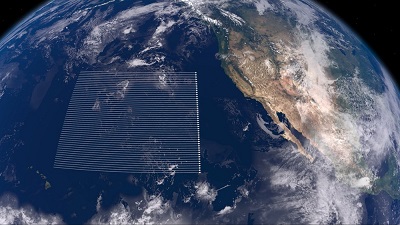Cleanup Device Will Be World's Largest Floating Structure
Boyan Slat, 20-year-old founder and CEO of The Ocean Cleanup, has announced that the world’s first system to passively clean up plastic pollution from the world’s oceans is to be deployed in 2016.
The array is projected to be deployed in the second quarter of 2016. The feasibility of deployment, off the coast of Tsushima, an island located in the waters between Japan and South-Korea is currently being researched.
 The system will span 2,000 meters (6,560 feet), becoming the longest floating structure ever deployed in the ocean (beating the current record of 1,000 meters held by the Tokyo Mega-Float airport). It will be operational for at least two years, catching plastic pollution before it reaches the shores of the proposed deployment location of Tsushima Island.
The system will span 2,000 meters (6,560 feet), becoming the longest floating structure ever deployed in the ocean (beating the current record of 1,000 meters held by the Tokyo Mega-Float airport). It will be operational for at least two years, catching plastic pollution before it reaches the shores of the proposed deployment location of Tsushima Island.
The island is evaluating whether the plastic can be used as an alternative energy source.
The scale of the plastic pollution problem, in the case of Tsushima Island, is approximately one cubic meter of pollution per person washed up each year, and this has led the Japanese local government to seek innovative solutions to the problem.
The deployment will represent an important milestone in The Ocean Cleanup’s mission to remove plastic pollution from the world’s oceans. Within five years, after a series of deployments of increasing scale, The Ocean Cleanup plans to deploy a 100 kilometer (62 mile) long system to clean up about half the Great Pacific Garbage Patch, between Hawaii and California.
Slat said: “Taking care of the world’s ocean garbage problem is one of the largest environmental challenges mankind faces today. Not only will this first cleanup array contribute to cleaner waters and coasts but it simultaneously is an essential step towards our goal of cleaning up the Great Pacific Garbage Patch. This deployment will enable us to study the system’s efficiency and durability over time.”
Mega Expedition
In April, the organization announced a Mega Expedition, in which up to 50 vessels will collect more plastic measurements in three weeks than have been collected in the past 40 years combined.
The Mega Expedition will take place in August 2015, and the vessels will cover a 3,500,000 square kilometer area between Hawaii and California in parallel, creating the first high- resolution map of plastic in the Pacific Ocean.
 The expedition, an initiative of The Ocean Cleanup, is supported by the Transpac sailing race, which is assisting in the recruitment of vessels. The City of Los Angeles will welcome the expedition to its port by the end of August.
The expedition, an initiative of The Ocean Cleanup, is supported by the Transpac sailing race, which is assisting in the recruitment of vessels. The City of Los Angeles will welcome the expedition to its port by the end of August.
Eric Garcetti, Mayor of Los Angeles said: “Increasing our scientific understanding of the Great Pacific Garbage Patch is essential to developing effective solutions. It's this type of creative and large-scale thinking that we need to tackle problems like this. We're proud to be welcoming the Mega Expedition to the Port of Los Angeles this year.”
“When you want to clean the oceans, it is important to know how much plastic is out there,” says Slat. “Right now, estimates vary orders of magnitude, due to the small amount of measurements, which furthermore have been taken over very long period. The Mega Expedition will allow us to produce the first-ever high-resolution estimate of the amount of plastic inside the Great Pacific Garbage Patch and we are grateful for the Mayor’s and Transpac’s support.”
Skippers and vessel owners can still sign up to participate.
